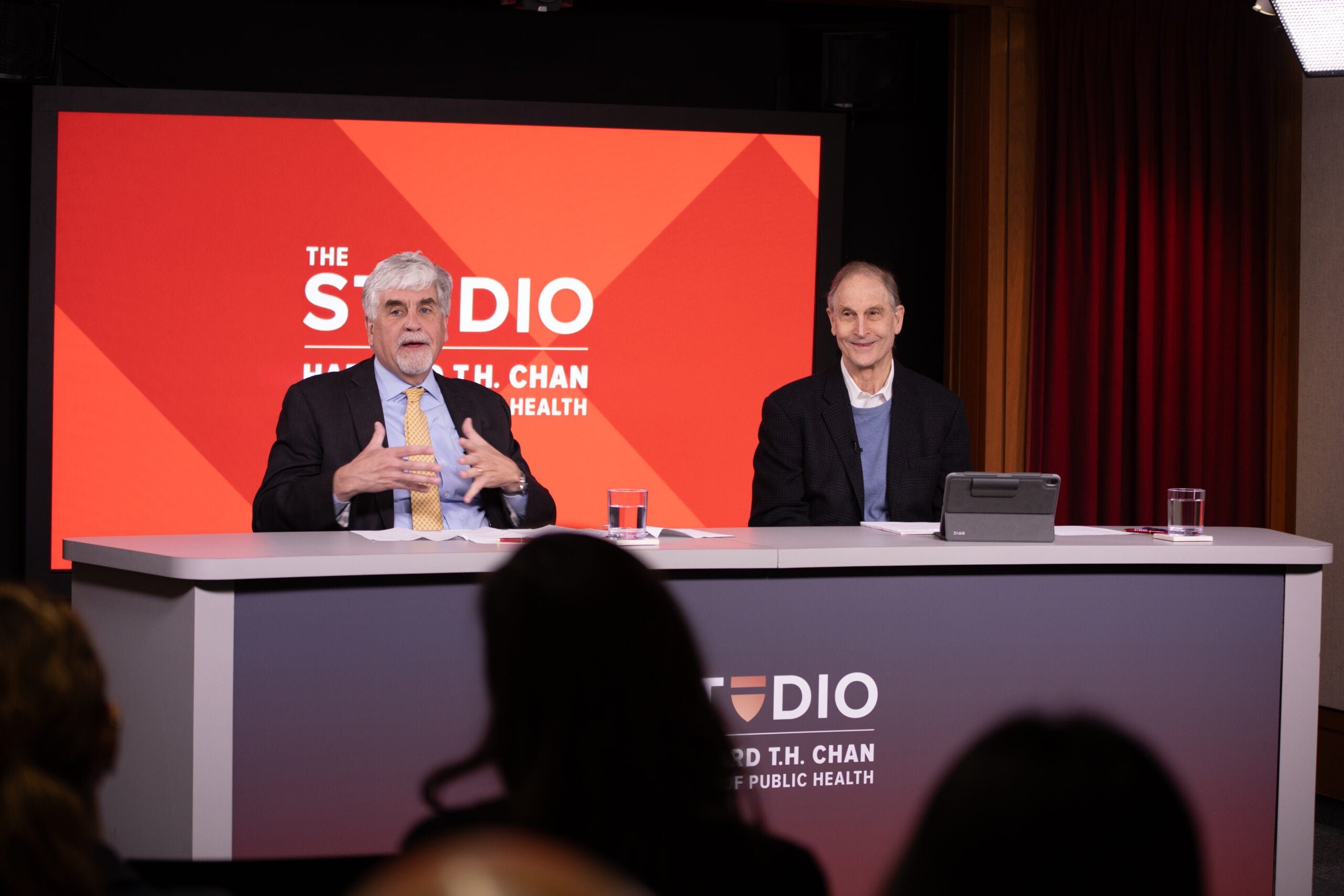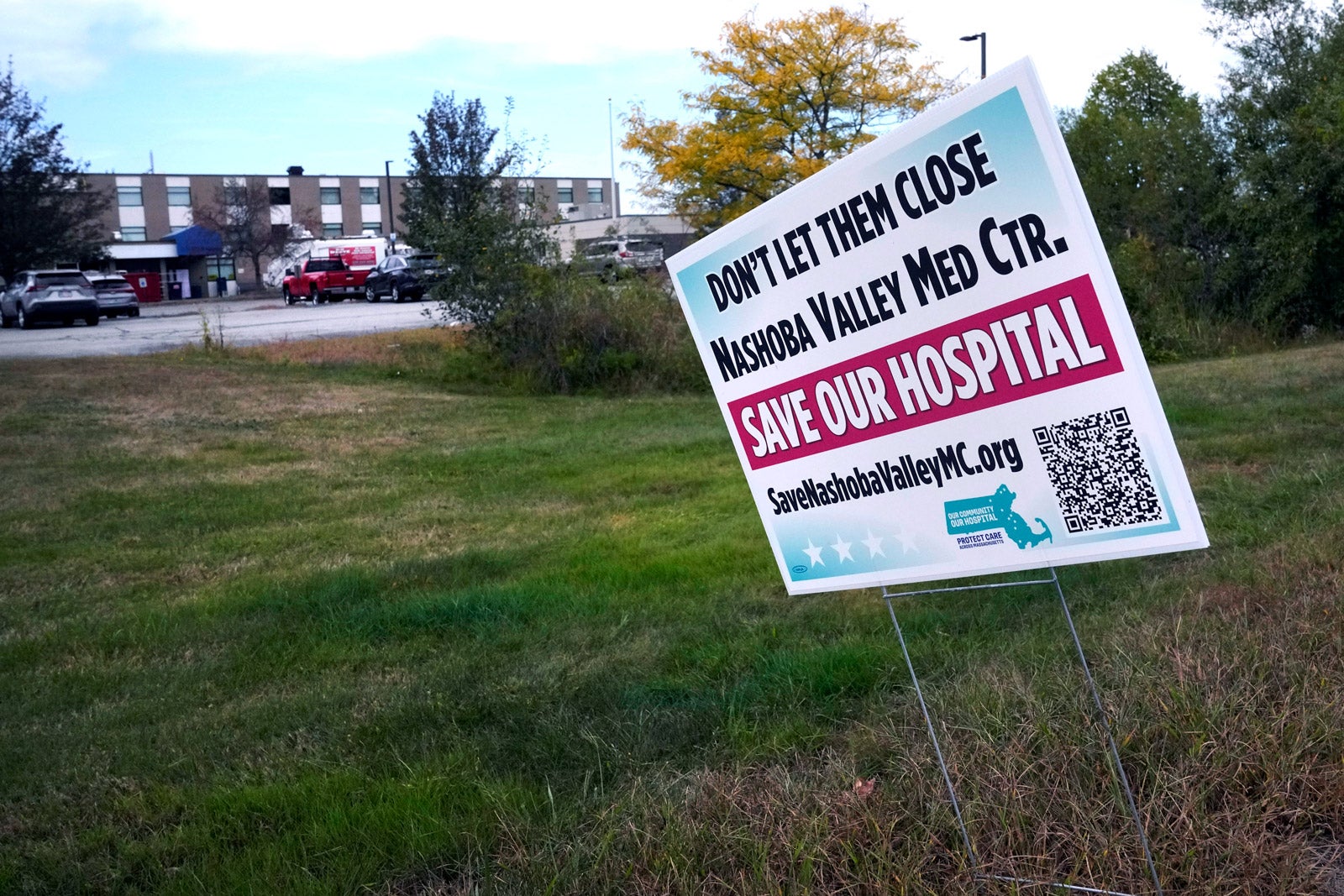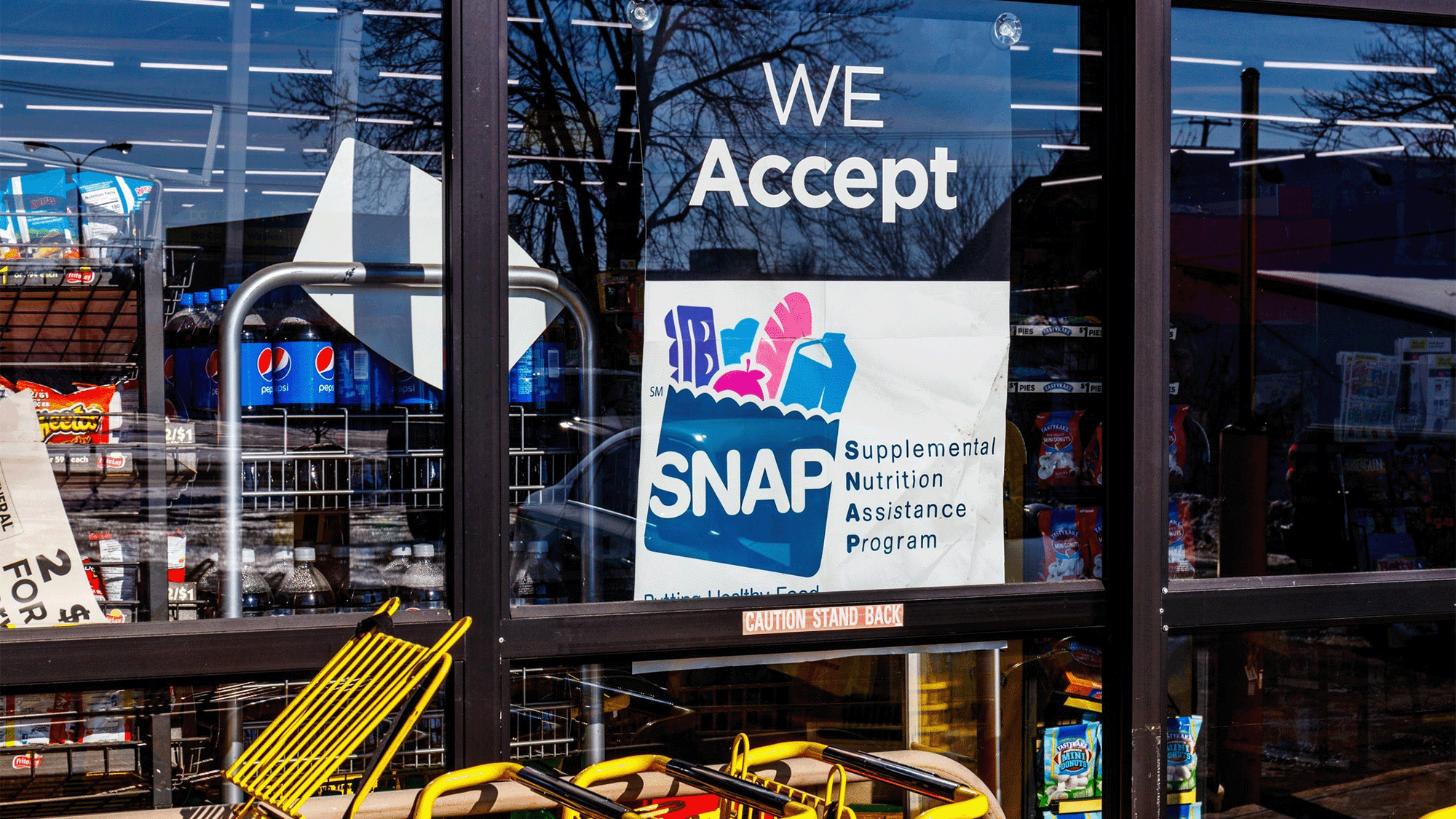Inside ‘Operation Warp Speed’ and the U.S. COVID-19 response

Federal bureaucracy isn’t known for being nimble—but amid the COVID-19 pandemic, the U.S. government made record time in facilitating the invention, approval, and distribution of lifesaving vaccines.
How?
Eric Hargan, who served as deputy secretary of the U.S. Department of Health and Human Services (HHS) during the first year of the pandemic, shared his insider’s perspective in an April 24 fireside chat hosted by the Studio at Harvard T.H. Chan School of Public Health.
Hargan joined David Blumenthal, Professor of the Practice of Public Health and Health Policy at Harvard Chan School, for a conversation about the early U.S. response to COVID-19, including the eight months that elapsed between President Trump’s announcement of intent to rapidly create a vaccine in May 2020 and the first Americans receiving the shot in January 2021. According to Hargan, this effort, aptly termed “Operation Warp Speed,” was made possible by HHS being given an unusual level of independence.
Usually, Hargan said, the list of people working on a significant government project is ever-lengthening. For Operation Warp Speed, however, “[HHS was] given a great deal of autonomy. There was no accretion of a lot of people. A lot of the team that started [the work] is the team that actually carried it out.”
Strategically collaborating with the private sector—ranging from pharmaceutical companies to United Parcel Service—and tapping into the Department of Defense’s logistical expertise also helped speed up HHS’ work.
Ultimately, Hargan said, Operation Warp Speed demonstrated the government’s largely underestimated capacity for flexibility and collaboration.
“Our system … was able to react … and we were able to change our attitudes and behaviors very quickly under pressure without breaking. I think that should give everybody a lot of encouragement … [around] the inherent resourcefulness [of the government],” he said.
Telehealth takes hold
Hargan also discussed a “silver lining” from the pandemic: the expansion of telehealth. Hargan, who grew up in a rural area, worked on HHS efforts to improve rural health through tools like telehealth for years ahead of the pandemic. That gave the department a head start in increasing telehealth’s reach when many Americans feared seeking routine care in-person.
“We were able to [expand access to telehealth] early in the pandemic … because we had [already] spent a couple of years thinking through the policy implications,” he said. “It became a permanent part of the American medical landscape, and a positive one.”


